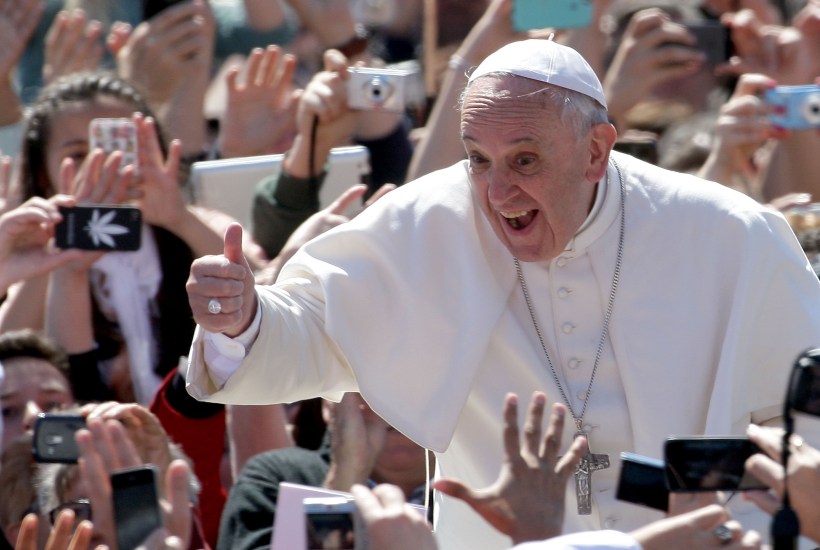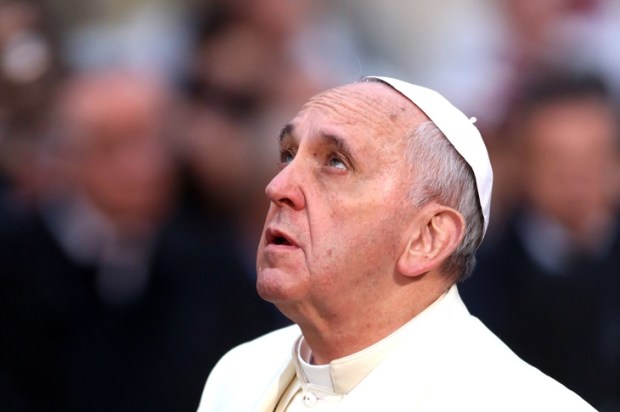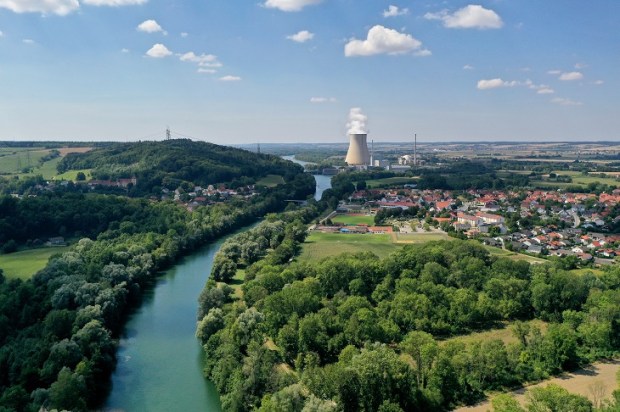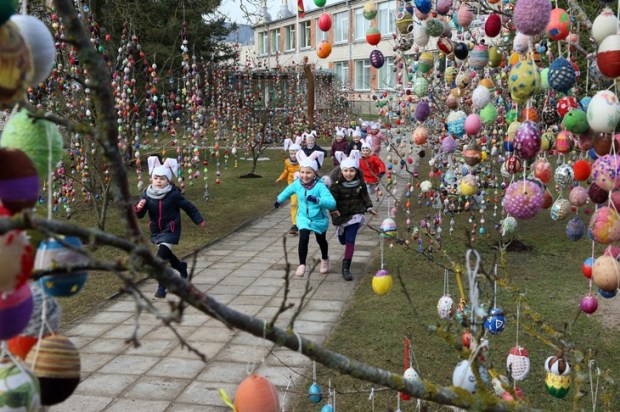Just the other day another juicy bit of Pope Francis ‘table talk’ hit the media to wide acclaim.
Popularly endorsed one-liners and striking gestures have been the hallmark of his pontificate right from Day 1, March 13, 2013, when Jorge Mario Cardinal Bergoglio of Buenos Aires, Argentina, was elected Pope in succession to Benedict XVI.
According to a Chilean sexual abuse victim, Juan Carlos Cruz, Pope Francis told him during a private meeting at the Vatican that his being homosexual was OK.
The Pope had met with Cruz to apologize for the abuse he had suffered at the hands of a notorious clerical sexual predator, Fernando Karadima.
The meeting between Cruz and the Pope was part of a damage control operation after Francis had earlier accused Chilean sexual abuse victims of “slander”. They had alleged complicity in Karadima’s crimes of one, Juan Barros, whom the Pope had appointed bishop of the diocese of Osorno. The Pope’s choice of Barros provoked a near riot at his installation Mass in March 2015.
After the kiss-and-make-up meeting, Cruz reported to the Spanish newspaper El Pais:
He told me, ‘Juan Carlos, that you are gay does not matter. God made you like this and loves you like this and I don’t care. The pope loves you like this. You have to be happy with who you are.
Sensitive and caring sentiments to be sure. Buried in them, however, is a contradiction.
According to the Catholic Church’s teaching, homosexual acts are a “grave depravity,” “intrinsically disordered” and “contrary to the natural law.”
Question: So how then does the good God, in which the Catholic Church believes, create men and women with natural (“God made you like this”) dispositions toward committing gravely depraved, “intrinsically disordered” acts “contrary to the natural law”?
Answer: Well, God doesn’t. In fact, he can’t. It would go against his own nature to do so. What God is and what he does can’t be in opposition to each other.
Question: So, where does that leave Juan Carlos?
Answer: If Pope Francis had an answer, he didn’t offer it. He just moved on. The Vatican’s official spokesman, Greg Bourke, declined to confirm or deny Cruz’s account of the conversation.
After five years of the Francis pontificate, we don’t need the Vatican’s press office to help us understand what the Pope actually said and what it might mean for the Church.
The exchange between Pope Francis and Cruz was not a communications glitch. The Pope didn’t fumble the ball or miss an opportunity. On the contrary, he was following a studied and determined course. This is how, quite often, he gets out his message.
Between October 2013 and March of 2018, Pope Francis has had five published conversations with Eugenio Scalfari, a professed atheist and founder of the radically secularist Italian newspaper La Repubblica.
These conversations were of a special kind. Scalfari didn’t record them; he took no notes; and reconstructed the exchange from memory.
It’s invariably mentioned in Catholic media that Scalfari is 94 years old. It’s as if to suggest that his mental faculties are no longer up to supporting his unconventional methods. That’s hardly credible, however. Scalfari is elegant in demeanour and sharp of mind. He’s not a geriatric too dim of memory to recall the striking moments in a conversation or too befuddled of intelligence to grasp their significance. If he were, the notoriously impatient Bergoglio wouldn’t be wasting time on him. What’s more, Scalfari’s supposed distortions of the Pope’s words – which conservatives feel the need to plead – have not so far served as a barrier to further interviews.
In two of these now famous conversations — one in March 2015, another in March 2018 — Scalfari reported Francis as saying that the unrepentant wicked were not condemned to Hell but that their souls were annihilated at death. Everyone else passes through death and goes to heaven.
After publication in La Repubblica of the March 2018 conversation, the Vatican press office did put out a statement. “The article,” it said, “is the result of his reconstruction in which the exact words spoken by the Pope are not quoted.”
One doesn’t need to say this, but this statement told us only what we already knew about how Scalfari worked and it does not dispute the accuracy of his reports.
Then there were the two Synods on marriage, one in October 2014 and the other in October 2015.
After protracted but indecisive battles between papal-backed liberals and doctrinal traditionalists, the synods ultimately issued, in March 2016, in an “encyclical” or teaching letter addressed by Pope Frances to the whole Church.
It was entitled Amoris Laetitia – “The Joy of Love” – a possibly inadvertent but suitably erotic cultural reference given that in the document Francis declared for the liberals and signalled a detente with the sexual revolution.
Now, from the point of “the World”, all of this good stuff. Accepting gays; breaking down the prohibition against the divorced and remarried receiving the Eucharist; and, best of all, emptying out Hell: that’s what reformers do – throw out the crippling old; ring in the liberating new. It was against the background of boldness on these and other fronts – his unqualified endorsement, for example, of climate change theories and mass immigration – that Pope Francis won in 2016 his highest accolade from the earthly powers.
According to Jeffrey Goldberg, President Barack Obama’s “favourite” world leader was Pope Francis. Goldberg had published in The Atlantic a fascinating account of his conversations with Obama on foreign policy. From this it emerged that Obama admired Francis because he was, as Goldberg put it:
A devout believer who nevertheless is fully committed to pluralism. This sort of commitment is what Obama is seeking from Muslim leaders…
Whatever judgment one might make on his presidency, there’s no doubt that Obama is a man of acute intelligence. His judgements shouldn’t be dismissed. Consider then this: a Pope of the Catholic Church “fully committed to pluralism.” That’s telling us something; and, as the presidential accolade implied, Francis was a world player admitted to the first rank. He had soared to a level of credibility approaching that of John Paul II and, in terms of acceptability, even rivalled him. What John Paul had been to Ronald Reagan and Margaret Thatcher, Pope Francis had become to Barack Obama and Angela Merkel.
At this point, Austen Ivereigh’s starry-eyed 2014 portrait of Pope Francis, The Great Reformer, seemed vindicated.
Ivereigh’s pitch was that in Pope Francis the Church had found someone who, unlike his hapless predecessor, could speak to the world in a language it understood and carry through Church reforms where Benedict had crashed and burned.
There is no faulting Ivereigh over how Francis would run in the ‘cred’ stakes. He certainly has accumulated immense cachet both as a popular figure within the Church and as one acclaimed on the international stage. Even before, however, the Obama accolade had been published in The Atlantic, assessments of the pontiff had begun to take hold deeply at odds with Ivereigh’s rosy portrait.
So far this year, three English-language books highly critical of the Francis papacy have been published: Philip F. Lawler’s Lost Shepherd: How Pope Francis is misleading his flock; Ross Douthat’s To Change the Church: Pope Francis and the future of Catholicism; and Marcantonio Colonna’s The Dictator Pope: The inside story of the Francis papacy.
Together with The Great Reformer — indispensable on Bergoglio’s Argentine background — they are all well researched, well written and easy to read, if not always pleasingly so.
One of them, Colonna’s Dictator Pope, reads in fact like an Italian giallo or crime thriller. It certainly has most of the essential ingredients: sex, drugs, thuggery, financial chicanery, fear and horror. The story told by Colonna is stomach-churningly shocking. It’s not a book for the pious.
Colonna, a nom de plume for Henry Sire, has been criticised for relying heavily in Dictator Pope upon unnamed and unspecified sources. Sire, however, is an accomplished historian and biographer, even if only appreciated within a narrow circle. He knows all about sources and accuracy and about how, when writing a book like this, the most illuminating information often comes from people who must cloak themselves in anonymity. Recourse to them is necessary if the full story is to be told.
Henry Sire, on the traditionalist wing of the Catholic Church, might be compared to Pulitzer Prize-winning Seymour Hersh, on the left wing of American journalism. Hersh uses the same kind of ‘deep’ sources in his work and has often been criticised for it. But then, if he had not resorted to them, Hersh probably would never have been able to break such big stories as the Mai Lai massacre in Vietnam and the Abu Ghraib prison scandal in Iraq.
Telling the truth about the Bergoglio Vatican has proved just as difficult as exposing blunders and scandals in the conduct of US foreign policy. In order to bring to light this grim tale, Sire had first to self-publish Dictator Pope as an e-book. It was only after sales of this took off that he was able to find a publisher in Regnery Publishing for a revised and updated “hard” edition.
Sire’s book is wider in scope and more detailed than those of Lawler and Douthat whose works are both more focused and more cautious about sources.
They all deal, however, with how Pope Francis has relativised the Catholic Church’s teaching on marriage and divorce – and, by implication, the whole body of Catholic moral teaching.
They all describe how Francis has failed in the primary mission for which he was elected: to cleanse the Vatican bureaucracy and, more broadly, the Catholic priesthood of moral turpitude in the ranks and to reform the Vatican’s notoriously opaque, generally amateur and all too often corrupt financial management.
In fact, the vices in the face of which Pope Benedict took the still stunning decision to resign the papacy are as entrenched today as they ever were, perhaps more so.
The reality is that Pope Benedict had implemented a series of sound reforms in precisely those areas in which the 2013 conclave had called upon Cardinal Bergoglio to do more and with greater success. Benedict, however, had been making solid, if often resisted, progress right up until the day when something snapped. Under Francis, there’s actually been a roll-back of what Benedict had accomplished.
I know, you don’t believe me. Then sit down, take a stiff drink and start reading.
Of the three books published this year, the most devastating for conservative Catholics would be Lawler’s Lost Shepherd.
Lawler is a top-notch American Catholic journalist, editor and author. He labours to get things right. He’s very much a mainstream, post-Vatican II conservative with a deep reverence for the papacy, its teachings and policies.
It was a slow process, but eventually, it happened. As a professionally close observer of Vatican affairs, Lawler reached the point where he could no longer avoid the conclusion that Papa Bergoglio was an autocratic head-kicker “relentlessly” driving a “radical” agenda.
Instead, however, of devoutly averting his gaze, Lawler wrote a series of biting articles in Catholic World News which he edits. Then he paused, drew breath, gathered up his materials and put it all down with great care, deliberation and even understatement in a book.
Lost Shepherd is an insider’s book for reading Catholics in the pews, mainly for conservatives like Lawler. Most of them are troubled by, if not in denial about, the Francis pontificate. Many of them have been shocked that such a widely-followed and respected figure as Lawler could write so critically of the Pope – of any Pope. This book is for them – and its very carefulness and precision is utterly deadly for the Francis mythos.
To Change the Church is quite different. This is from the pen of man at the top of his form and of great credibility in the always roiling American public discourse. Douthat is an op-ed columnist with the New York Times and film critic for the National Review.
This book is intended for anyone with an interest in religion and the contemporary cultural movement. It is written with zest, flourish and humour and it draws back sufficiently from the subject matter to take a long view of where the Catholic Church has come from and where it might be headed. It’s a splendid effort.
Douthat is neither a traditionalist in the Sire mould nor a conservative after the Lawler kind. His Catholic instincts incline toward the conservative but describes himself as not particularly pious, as somewhat lazy about his religion and uncommitted in the Church’s internal culture wars. Maybe this is why, of the four authors considered here, his perspective is wider and vision clearer.
Douthat argues that the crisis triggered by Pope Francis has exposed brutally the naïveté of conservatives about the durability of the John Paul-Benedict synthesis of old doctrines with new styles and formulations. The fact that it has fallen apart so quickly in the face of the Francis “revolution” testifies to its inherent fragility.
Douthat speculates that this bitter experience might compel many conservatives, especially the younger among them, “to take a darker view of the post-Vatican II era, and to reassess whether there might have always been more wisdom in the traditionalist critique” – that orthodox belief can’t survive heterodox practices – “than they wanted to believe.”
Douthat continues:
If the conservatism of John Paul and Benedict led only to Francis, perhaps it did not conserve enough; if those Popes’ attempted synthesis was so easily challenged and unravelled, perhaps it wasn’t a successful synthesis at all; if their project of restoration still left fertile soil for a new revolution, perhaps the entire project needed to be reassessed.
My take? There is nothing unusual about Pope Francis. He is not some kind of archetype, whether of the darkness or of the light. Jorge Mario Bergoglio is just a typical post-Vatican II Catholic priest who’s risen to the top. He’s a type: a coin minted true to the die.
All you need to know in order to understand him are these bare facts: he is a Jesuit and the first Pope since Vatican Council II (1962-1965) whose religious formation and education had not been completed before the Council and whose ordination took place after the Council in 1969.
What you hear Pope Francis say, what you see him do, is what most Catholics have seen and heard in their dioceses and parishes ever since that time. Francis is a faithful reflection of the post-conciliar Catholic Church.
His predecessors, John Paul II and Benedict XVI, were ordained to the priesthood, respectively, in 1945 and 1951; and, although both were important participants in the Council — the former as a bishop and archbishop, the latter as a theological expert – they ended up atypical of vast tracts of the Church-on-the-ground over which they came nominally to reign. They were powerless to bring to order forces set loose in a Church by a reinvention they had helped to set in motion.
It simply had to happen. One day a man like Jorge Bergoglio would be elected Pope. As a child of the revolution, he was inevitable.
The Dictator Pope: The Inside Story of the Francis Papacy; by Marcantonio Colonna; Regnery Publishing, Washington DC, 2018; 232pp.
Lost Shepherd: How Pope Francis is Misleading His Flock; By Philip F, Lawler; Regnery Gateway, Washington DC, 2018; 201pp.
To Change the Church: Pope Francis and the Future of Catholicism; By Ross Douthat; Simon & Schuster, New York; 2018; 234pp.
The Great Reformer: Francis and the making of a radical Pope; by Austen Ivereigh, Allen & Unwin, Sydney, 2014; 445pp.
Gary Scarrabelotti blogs at Scarra Blog.
Got something to add? Join the discussion and comment below.
Got something to add? Join the discussion and comment below.
Get 10 issues for just $10
Subscribe to The Spectator Australia today for the next 10 magazine issues, plus full online access, for just $10.


























Comments
Don't miss out
Join the conversation with other Spectator Australia readers. Subscribe to leave a comment.
SUBSCRIBEAlready a subscriber? Log in